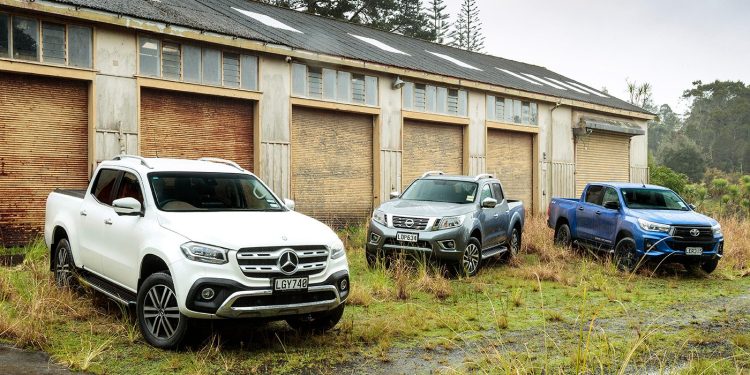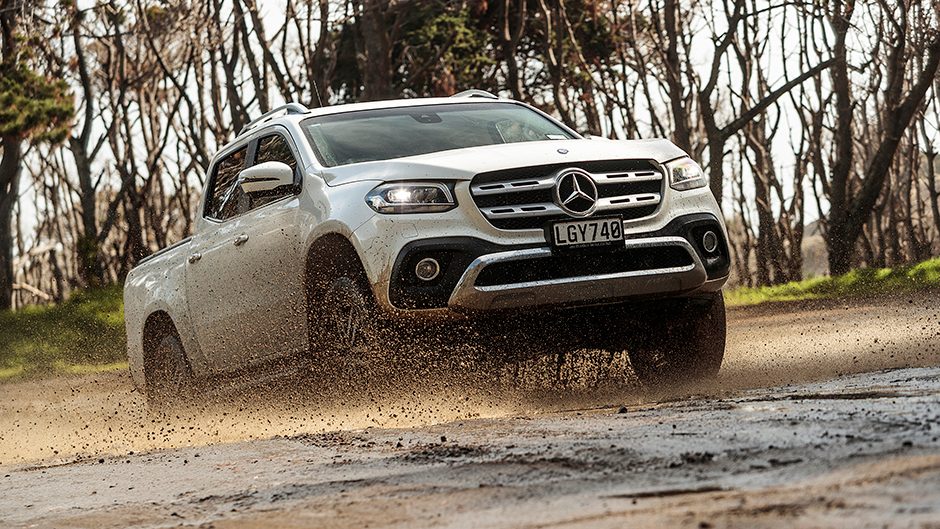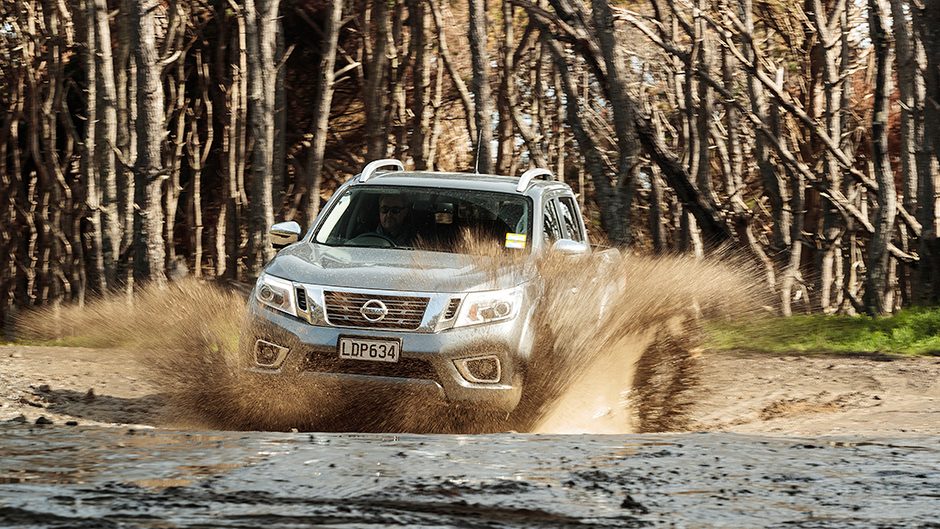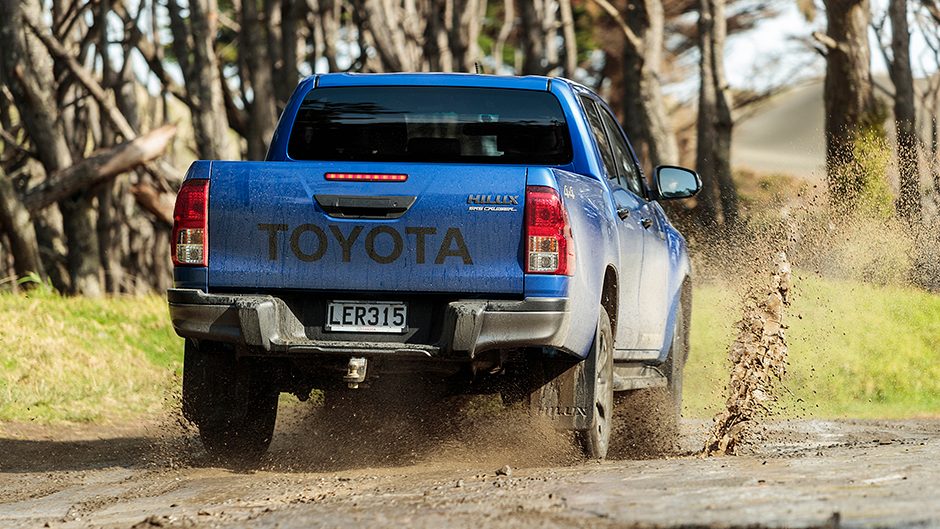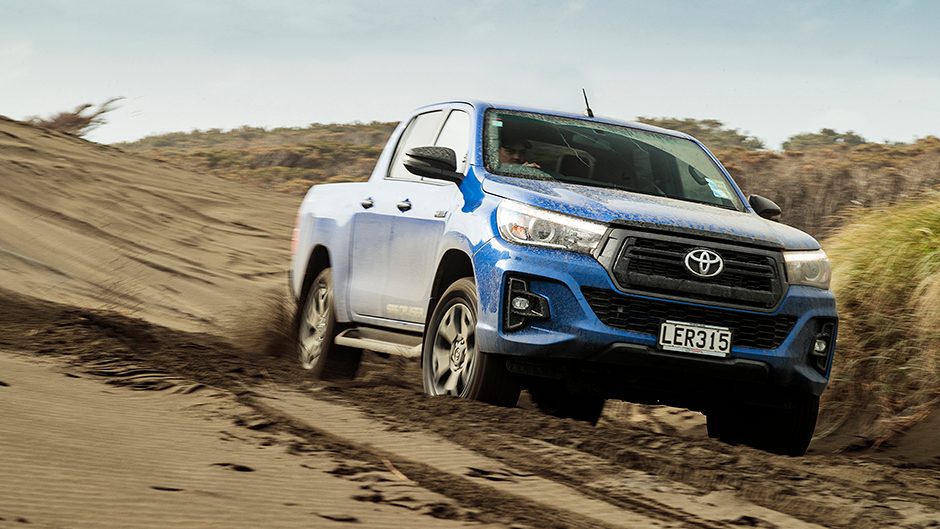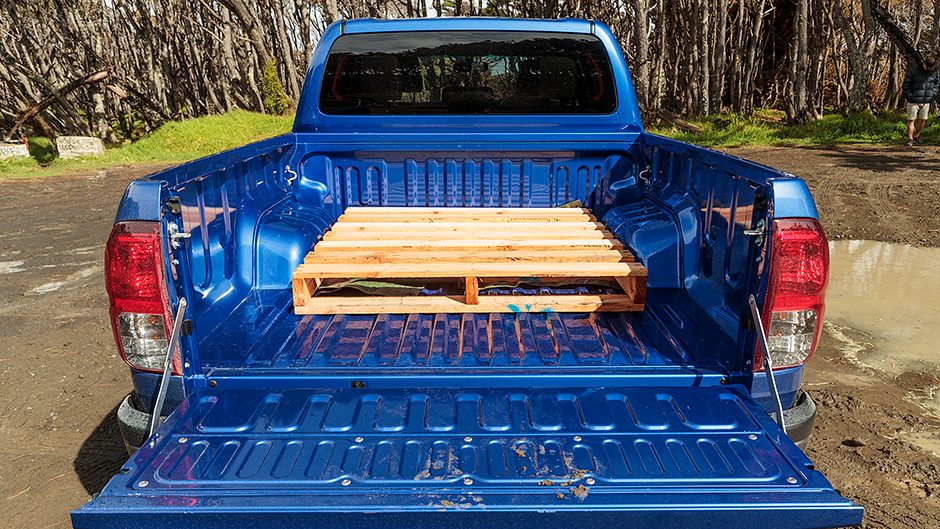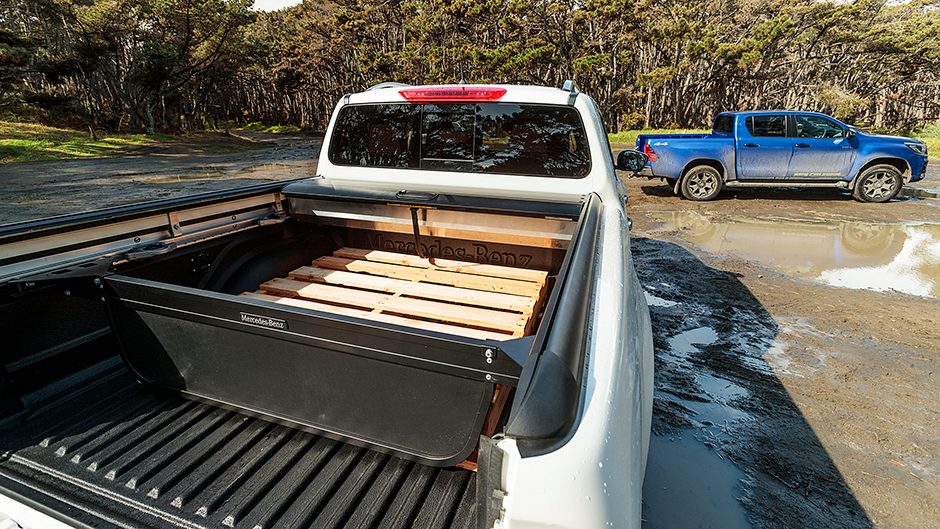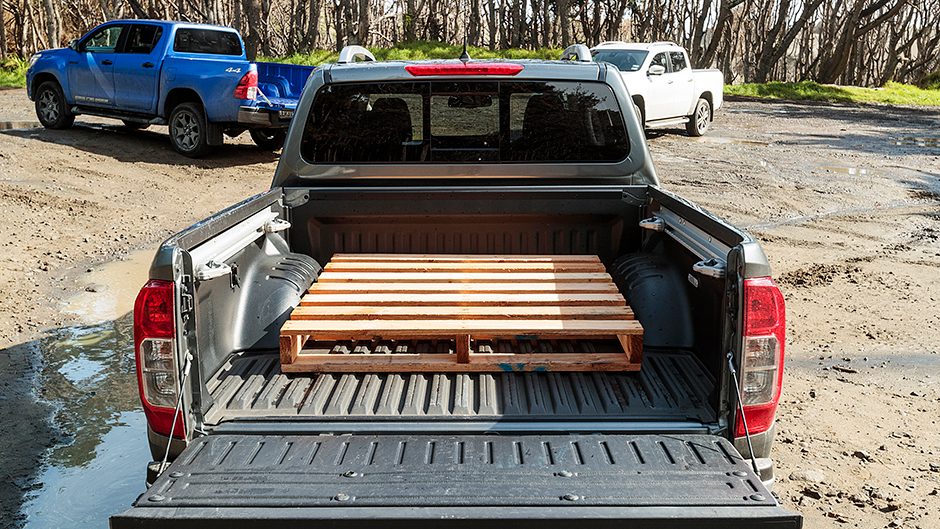2018 Toyota Hilux SR5 Cruiser 4×4 vs Mercedes-Benz X 250 D Power vs Nissan Navara ST-X 4×4 comparison
Words Kyle Cassidy | Photos Tom Gasnier
The new X-Class from Mercedes-Benz aims to add a premium allure to the ute sector. Here we test it against blood brother Nissan Navara and the updated Hilux SR5 Cruiser.
About never is how often we’ve included Toyota and Nissan in a comparison with Mercedes-Benz, but with the German entering the world of pick-ups, it’s having to get down and dirty with the stalwarts of the sector. Utes are big sellers in many regions, and manufacturers are scrambling to get their slice of the action.
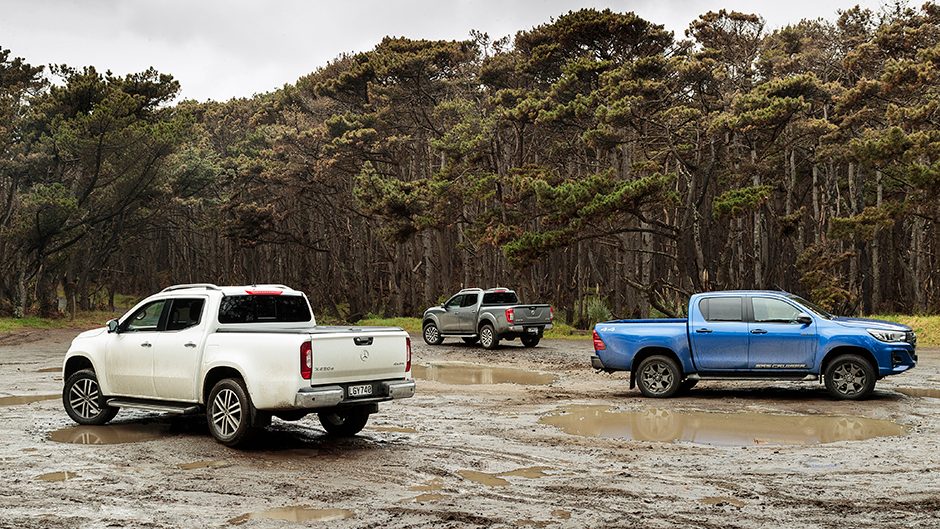
Mercedes entered the fray earlier this year with its X-Class, a joint venture with the Nissan Renault Alliance, using the chassis and engine of the Navara. This sort of mash-up is not unusual; Ford and Mazda used to be buddies and various Couriers/Rangers have been the basis for Mazda’s B-series utes. As an aside, that deal is done, and Isuzu will provide Mazda with its next ute, while there is talk that VW’s forthcoming Amarok will be developed by Ford. But our point is crossbred utilities are nothing new. However, ones claiming to be premium are, which is how Mercedes-Benz is pitching its X-Class.
High-end ute offerings are on the increase and here we check out three top-of-the-range variants. Toyota has added the SR5 Cruiser to the mix, a Hilux that looks better and offers more. Nissan tweaked its Navara earlier in the year and we were keen to check out the differences between the ST-X and the X-Class 250d Power. As always, our comparison looks at them more from the ‘lifestyle’ point of view rather than as serious off roaders or load haulers, to find the best truck to strut about town in.
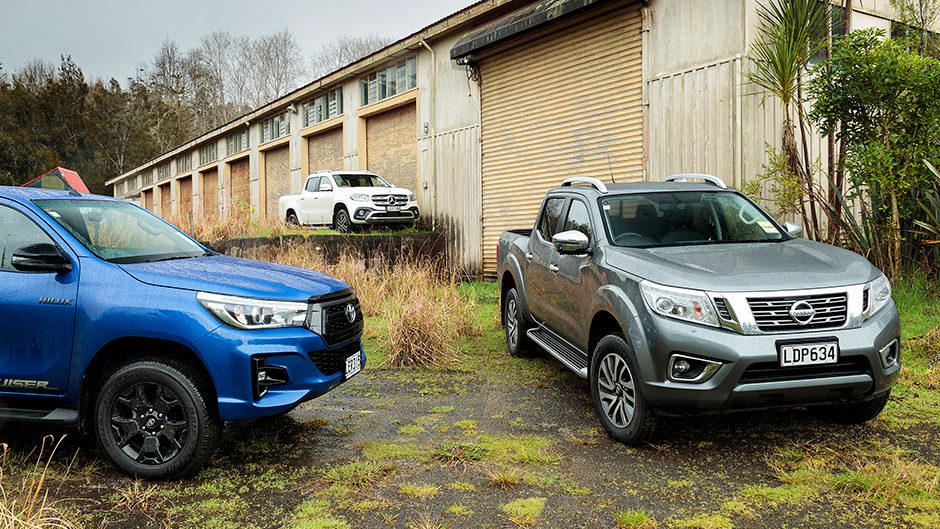
Price disparity
Along with increasingly replete spec sheets, the price tags attached to utes continue to grow. A ute wearing a three-pointed star was never going to be cheap and the top four-cylinder X-Class, the X 250d Power, is $69,000. With options fitted it nudges past $75k. The top Navara ST-X lists for $64,490.
Toyota’s SR5 Cruiser began life as a $67,790 truck but in the days of Drive Happy is now $56,990 drive away with no haggling over the numbers. So there’s a disparity in price for what are otherwise similarly matched trucks. Last time we trialled the Hilux against the Navara we chose the Nissan but does the price realignment turn the tables, and is the X-Class really worthy of its premium?
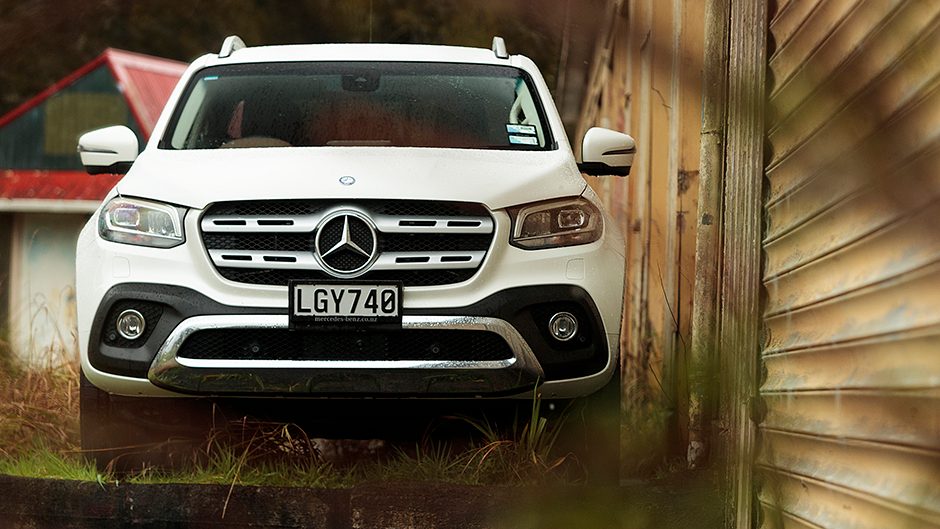
Nuts and bolts
Utes all follow a similar design playbook with a full chassis and solid rear axle. This trio features selectable four-wheel drive, torque sent to the front wheels only when the transfer dial is switched to 4-Hi. Along with low-range, each has a rear diff lock, and hill descent control. The Navara, and therefore the X-Class too, uses a five-link rear end with coil springs to help smooth the ride, while the Hilux uses the typical leaf spring arrangement.
Diesels power this trio, the X-Class and Navara sharing the same Renault-designed bi-turbo 2.3-litre four, both with 140kW and 450Nm. Toyota uses its own 2.8-litre single turbo four to conjure 130kW and 450Nm. The ‘Mer-vara’ uses a seven-speed auto, the Toyota has six-speeds. SR5 Cruiser adds a tougher look up front for the Hilux and blacked out detailing, while inside there’s leather trim and seat heaters.
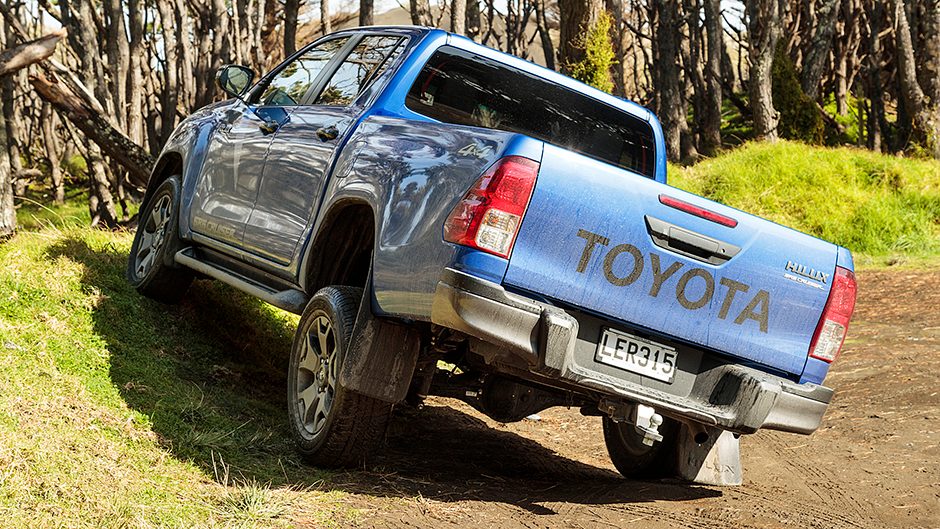
Up for a roadie?
You’d think on-road dynamics wouldn’t be much of a concern to ute buyers but often when out and about we find ourselves behind pick-up drivers determined to stay ahead, so clearly a truck that goes well and handles is of some importance.
In this regard, we liked the quick and lively Navara. As part of a recent re-jig, a lower ratio has quickened the steering, making it more direct and responsive, noticeable as soon as you move the wheel off centre. It’s still a bit light but the added response is appreciated and Navara turns in quick for a truck, the front holding on well in turns. The rear end isn’t tied down so strictly to lend it compliance, tolerating the bumps nicely.
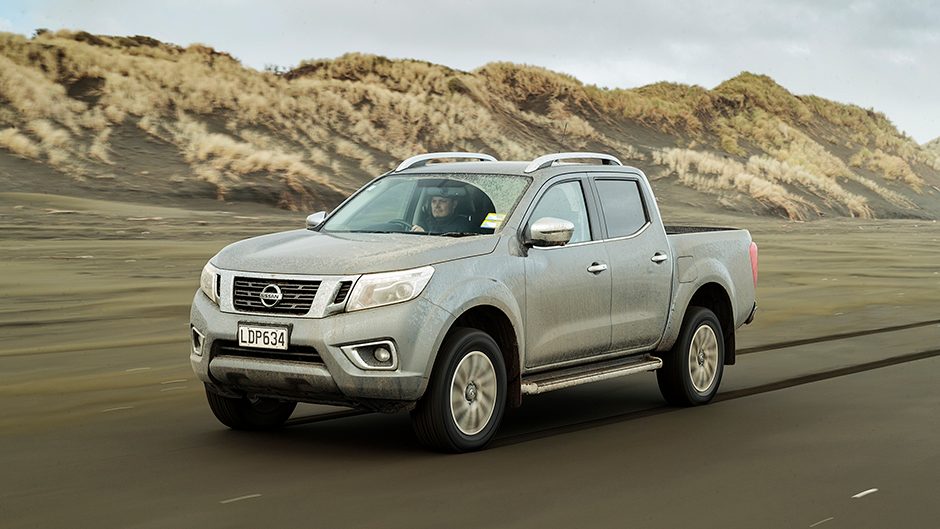
While there’s a little roll to contend with, Navara is a lively handler. And it’s a goer this, with the least weight to haul and the twin-turbo engine can really charge. It revs well and pulls strongly from 1500-3500rpm. The seven-speeder’s torque convertor doesn’t tend to lock-up much until you start manually shifting it, and working it between third, fourth and fifth, Navara is surprisingly quick.
The X-Class is wider than Navara, with increased track dimensions, and with more road oriented Dunlops, it grips the tarmac more readily, especially on the front end. There’s a nip more urgency from the steering, and the front bites harder while the rear flows a little more faithfully, with roll better controlled but it’s not as engaging to drive as a result. X-Class weighs more than Navara which takes some of the venom from the power delivery too. Pushing the gear lever into the manual gate accesses a quasi-sport mode where there’s better torque convertor lock-up.
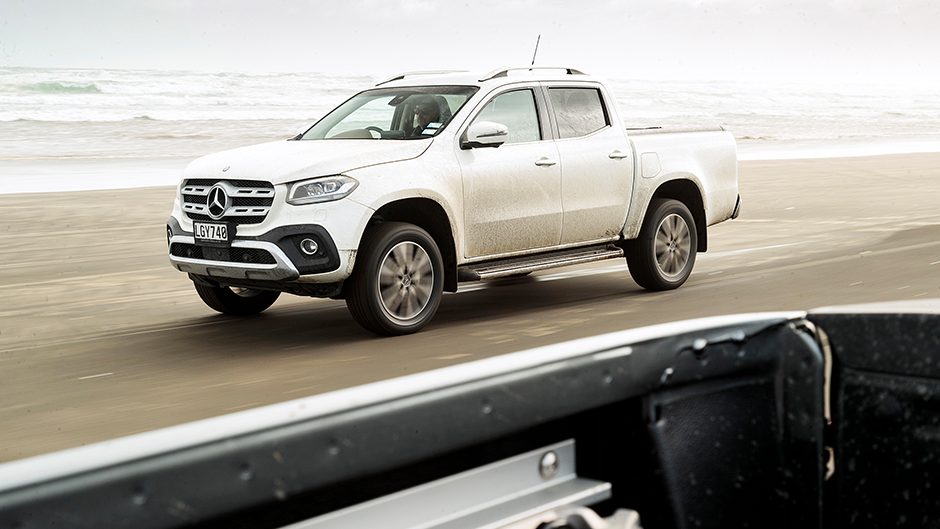
Hilux steers well with a consistently weighted and accurate helm but the front end will squeal earlier than the other two. The rear end feels more bumps but is otherwise stable, roll nicely tended to. It’s typically Toyota, safe and manageable when pressed. The auto has a Sport mode which helps keep the engine perky between 2500 and 4000rpm for best response but even with its power mode invoked the engine doesn’t have the same spread of urge and willingness to rev as the twin-turbo’d Mervara.
Grinding it out
Utes as a rule don’t ride particularly well but the least bumpy here is the Mercedes. The extra weight it carries (220kg more than the Navara) seems to help settle it, even on its 19s. The Navara isn’t too far behind in this regard, while the Hilux rear end is still quite bumpy around town. That said, its dampers are better at taking the sting from a decent hit. And this was noted on gravel roads where the Hilux felt better when taking on the potholes and corrugations. Each has steering that’s well assisted for easy low speed manoeuvres, the Navara with the handiest turning circle.
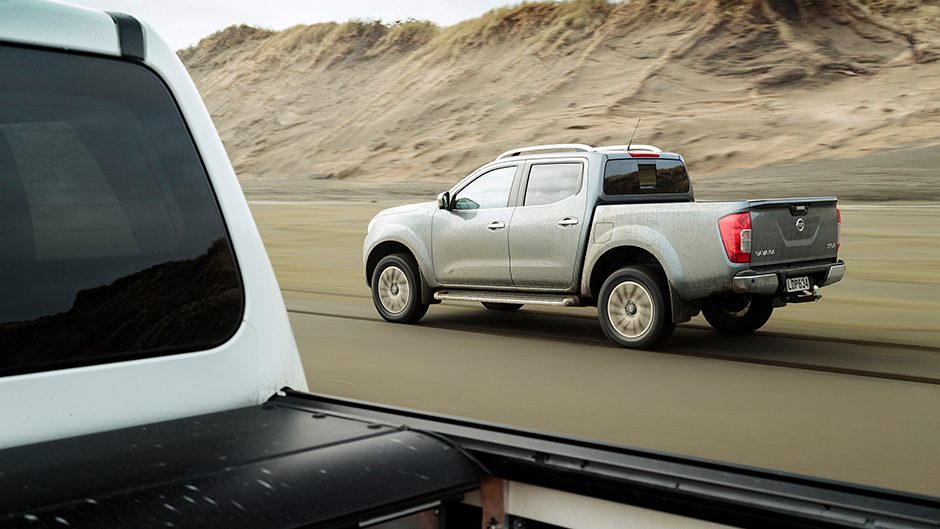
The 2.3-litre twin-turbo gets the Mervara twins moving smartly off the mark, the Toyota takes a moment longer to stir but with bulk low-end torque these three are quickly up to speed in traffic and have enough grunt for overtaking, particularly the Navara. And it happens to be the best on fuel too, the average resting at 8.7L/100km on test (7.0L/100km claimed), the Merc on 9.0L/100km (7.9 claimed) and the Lux on 10.0L/100km (8.4 claimed).
Interior decorated
Trucks tend toward a few unwanted noises and vibrations, characteristics unbecoming of a Mercedes-Benz, and so the Germans set about fortifying the X-Class with all manner of sound deadening. It adds weight but also refinement and it’s noticeably quieter than the Navara, and the Hilux too, at start-up, idle and when accelerating, with the usual rattle and clamour well muffled. Wind noise is suppressed too, as are suspension clunks.
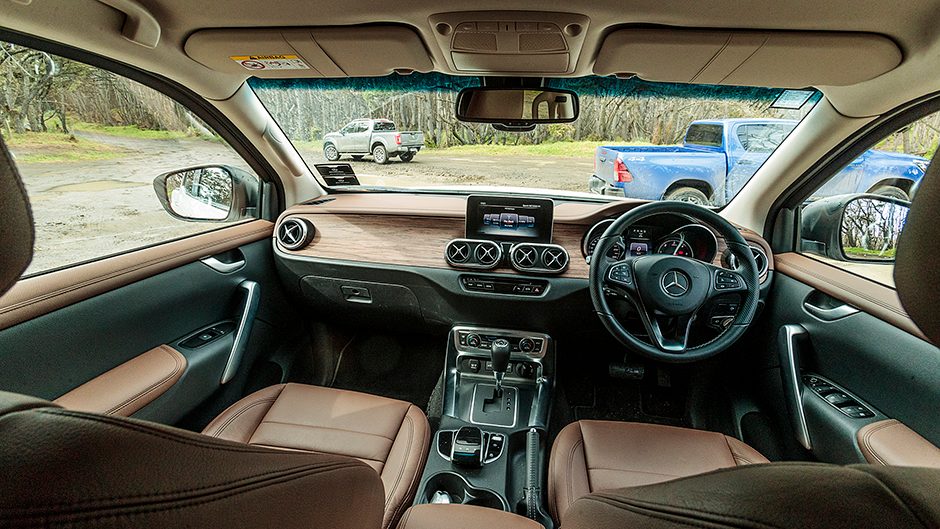
Inside is where M-B differentiates the X-Class not just from its donor vehicle but from all other utes. While the entry-level Pure is a mass of plastic, the Power better lives up to the aspirational nature of its badge. It’s SUV-like with its softly-lined door tops, dash pad and wood veneer. The lower regions of the cabin are built of the usual hard plastics but most of the components used are Merc-sourced. Only the ventilation buttons are from Nissan, yet are different to those used in Navara, classier again. There is a lack of storage, and just one useless cupholder, as the controller for the infotainment system takes command of the centre console. Touchscreens are easier, less distracting to use.
Apart from the ritzier design and finish, there are little things to distinguish the X-Class, like when you lift the windows in the Navara and switch off the ignition, they stop whereas they’ll continue closing in the Mercedes, and they raise more swiftly and quietly. All those little bits add up, but then you’re paying more, and things like the electric sliding rear window is extra as part of the Style Pack, and the nut brown leather is an additional $2050, the wood dash veneer a further $450.
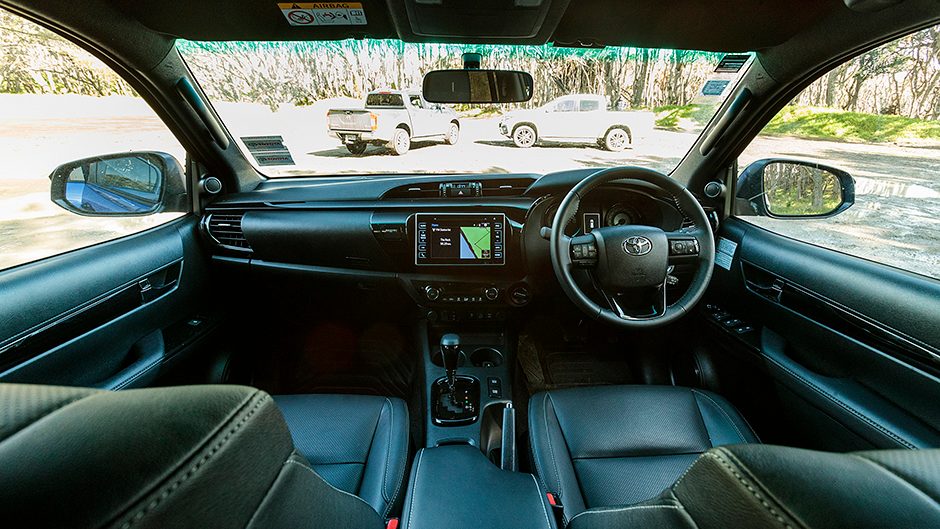
Like Hilux, the Navara interior is a hard plastic affair, and the leather accented seats are light on actual leather (leatherette used on more surfaces than not) but seat heaters come standard. The size of the Nissan’s infotainment screen isn’t much bigger than the average smartphone’s, and while there’s a surround view camera, the resolution isn’t flash. The Hilux’s screen is sharper and displays a good wide-angle backing camera, but some of the small soft buttons are difficult to hit on the move. The cabin design is pretty swish, it’s impeccably made and has the best storage. A proximity key features on all, along with seven air bags and ESP, but only Mercedes offers a lane departure and collision warning system with AEB.
Practical matters
Hilux has a few millimetres more legroom in the rear, the most headroom and the comfiest seat, whereas in the back of the Navara and X-Class, the seat height sees your knees up higher than your hip point, which isn’t particularly comfortable. Navara now has Isofix points to match the others. The tray of the X-Class is the widest between the wheel arches, Hilux is a little longer overall while they are all about equal for depth and load height.
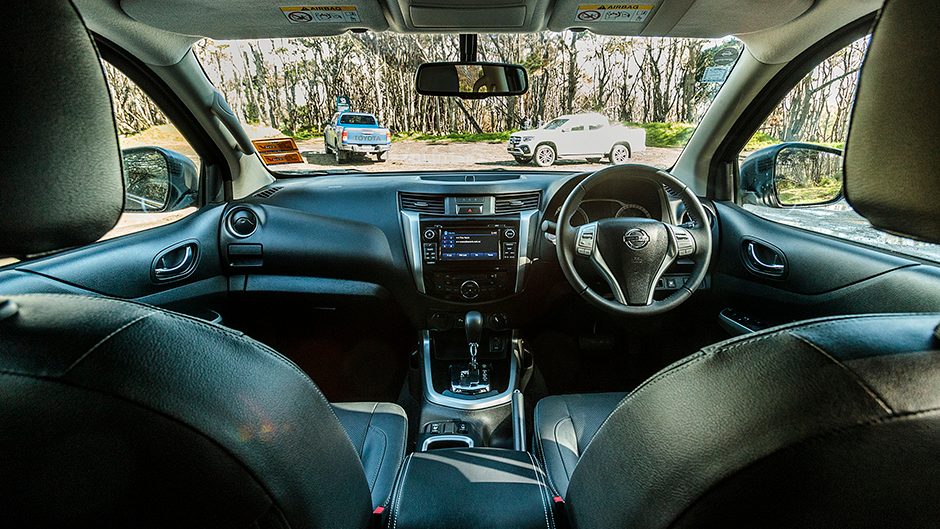
Mercedes states 20,000km/one year service intervals for its X-Class and Nissan the same, with the Hilux at 15,000km per annum. Toyota gives service cost clarity as part of its Drive Happy deal, the first four services (four years/60,000km) costing $295 each. Mercedes offers a service plan as an extra cost, while Nissan says it’s working on something similar to what Toyota offers in this space. The standard warranty on the Benz extends to three years/200,000km, the others three years/100,000km.
So what’s it to be then?
The X-Class hits its objective in terms of a premium offering; a pick-up which softens a ute’s usual rough edges with a hushed, high-end cabin, and it’s smooth while still retaining all the proper capabilities. But you pay for it, which effects its overall score here. The X-Class will appeal to those who haven’t considered a ute previously but it seems most are holding off until the $88k V6-powered 350d lands in December.
The SR5 Cruiser has more appeal now it looks better and costs less, and its cabin is sound too. We still prefer the way Navara drives and its powertrain, while its specification is competitive, the look stylish. It’s harder to seperate these two now . If you can strike the deal with Nissan to match the price and servicing of the Hilux, it’d be a hard to overlook.
| Model | Mercedes-Benz X-Class X 250 d Power |
| Price | $69,000 |
| Engine | 2298cc, IL4, TDI, 140kW/450Nm |
| Drivetrain | 7-speed auto, switchable 4×4 |
| Fuel Use | 7.9L/100km |
| C02 Output | 209g/km |
| 0-100km/h | 10.62sec |
| Weight | 2304kg |
| Model | Nissan Navara ST-X Double Cab 4×4 |
| Price | $64,990 |
| Engine | 2298cc, IL4, T/DI, 140kW/450Nm |
| Drivetrain | 7-speed auto, switchable 4×4 |
| Fuel Use | 7.0L/100km |
| C02 Output | 186g/km |
| 0-100km/h | 9.91sec |
| Weight | 1999kg |
| Model | Toyota Hilux SR5 4×4 |
| Price | $56,990 |
| Engine | 2755cc, IL4, TDI, 130kW/450Nm |
| Drivetrain | 6-speed auto, switchable 4×4 |
| Fuel Use | 8.5L/100km |
| C02 Output | 223g/km |
| 0-100km/h | 11.54sec |
| Weight | 2120kg |


